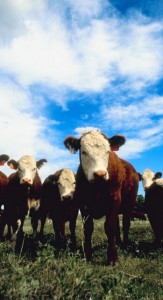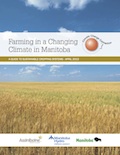 Because manure is such a volatile substance, many nutrients are easily lost and contribute to the high levels of nitrous oxide (N2O) in the atmosphere.
Because manure is such a volatile substance, many nutrients are easily lost and contribute to the high levels of nitrous oxide (N2O) in the atmosphere.
On this page, we suggest some manure management adaptations that can further reduce GHG emissions from agriculture:
- Manure testing
- Application equipment calibration
- Winter spreading
Manure testing
Manure testing should be done routinely to determine the amount of plant-available nutrients, particularly N and P.
Current legislation states that manure application be based on soil phosphorus levels.
- When soil Olsen-P levels are between 60 and 180 ppm, manure can be applied no more than five times the annual crop removal rate of phosphate (P2O5).
- Additionally, nitrate-N levels can be no more than 140 lbs per acre (157.1 kg/ha) of soil class 1 to 3.(1) Because both nutrient levels are important, manure testing is a cost-effective farming practice.
Calibrate application equipment
To ensure the target application rate of manure is applied, application equipment should be calibrated.
- For liquid manure, this can be done with drag-line or tanker application systems equipped with flow-rate monitors.(2)
- Spreading of solid manure is harder to accurately control. Manure testing should be done prior to application and spreading rates based on manure phosphorus levels. Manure spreaders should be properly maintained to ensure uniform spreading. Uniform spreading will lower risk of nutrient loss to the environment and is important for optimal crop response.(3)
Eliminate winter spreading
Winter manure application should be eliminated to prevent manure runoff at spring-thaw and to reduce spring-thaw N2O emissions.
Effective November 10, 2013, the spreading of livestock manure between November 10 and April 10 in Manitoba is prohibited under The Environment Act: Livestock Manure and Mortalities Management Regulation, unless otherwise noted. (4,5)
When manure is applied in the spring or after crop emergence, the developing crop uses the manure nutrients as they become plant-available. This minimizes the risk of loss to the environment.(6)
Should moving manure during the winter be necessary, it is recommended that the manure be stock-piled in the field and spread following spring-melt.
 For more information, download our publication “Farming in a Changing Climate in Manitoba – Crop Edition (2013)“
For more information, download our publication “Farming in a Changing Climate in Manitoba – Crop Edition (2013)“




